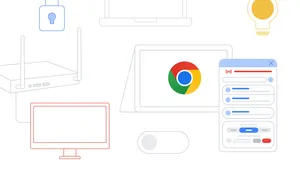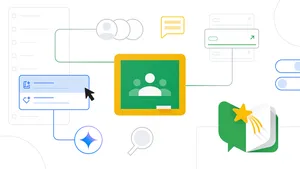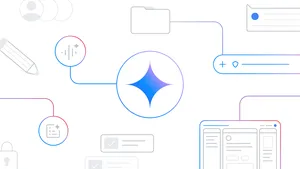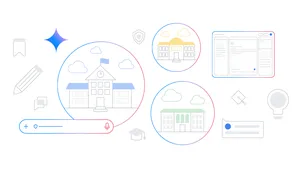How Devonport Boys High School is building the next generation of entrepreneurs
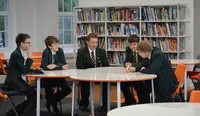
Editor’s note: Leading up to Bett, one of the largest education technology conferences in the world, we're highlighting teachers, students and administrators who are using educational technology to make learning more interactive and impactful for their students. From our Impact Portraits series, Ben Forte shares how Devonport is creating a more collaborative, entrepreneurial environment for its 1,200 students using technology. Check out @GoogleForEdu and #BETT2017 to learn what we're talking about at Bett. To hear more from Ben, visit Google’s teaching theater at Bett on Thursday Jan. 26 at 1:30 p.m.
When you walk into a startup or big tech office, it’s not out of the ordinary to see ping pong tables, vending machines for gadgets or open spaces without walls or cubicles. But these environments aren’t standard in the education system. In fact, most schools think that this type of modern, open space would create chaos and limit the ability to learn.
When I joined Devonport Boys High School, I set out to prove the opposite. I believed that by creating open spaces and giving students the technology and tools they need to think like entrepreneurs, they’d learn far more than in a rule-bound, confined environment. To support this idea, we created the Learning Commons: a dedicated space including a big room with an artificial lawn and bean bags, a separate room with whiteboard-ready desks, and small meeting rooms, custom built for collaboration and group discussions.

At the same time, we overhauled our technology. Chromebooks and G Suite for Education were so affordable that each student was allotted a device, letting us distribute technology to more students and teachers than ever before. We replaced outdated systems with Google tools to personalize learning and encourage greater collaboration. The result was a measurable increase in student participation, including a 60 percent increase in students accessing their accounts outside of school.

Empowering students to be digital ambassadors
Often when schools adopt new learning technology, teachers and administrators take responsibility for introducing the required resources and processes. At Devonport, we asked students to participate in the roll-out, and they embraced the opportunity. They created department- and subject-specific websites using Google Sites, and set up others for clubs and extracurriculars like Biology Society, Chess Club, Astronomy Club and Debate Club. This student-led project helped foster an entrepreneurial mindset and reorganize the departments and clubs. And now students, teachers and administrators can easily access shared event calendars, photos and resources with Google Drive.
Students also use Hangouts and Chromebooks outside of the classroom to hold meetings for student-run clubs and extracurricular activities. During the meetings, they take notes in Google Docs for everyone to view, and to help those who missed the meeting get up to speed. The portability of Chromebooks allows students to collaborate regardless of their physical location.

Meeting students where they are with personalized resources and parent involvement
With G Suite for Education, teachers can create a customized learning path by sharing videos, articles and additional assignments with each student based on their areas of improvement. By tracking their progress and giving every student one-on-one feedback during and after class, teachers are meeting students where they are, and challenging students to push themselves.

Parents are a big part of students’ education, and we wanted to create a better communication channel between parents and teachers. We created a Parent Portal on Google Sites, which lets teachers share updates and feedback with parents about their child’s learning. This not only creates a positive relationship for the school and parents, but also helps parents identify how they can help their children at home and outside of the classroom.
Teachers are also making learning content more dynamic by incorporating videos and online activities. Our psychology department truly adopted the digital mindset and replaced the textbook with Google Sites, including online videos, links to articles and recorded lesson plans.
We want our students to be inspired to think creatively, to become the next generation of digital entrepreneurs, inventing ways to improve our schools, their lives and the world through technology. With the help of G Suite and Chromebooks, we’re on our way.
Read the full Devonport Impact Portrait and check out g.co/EduImpact for stories of impact from around the world.

